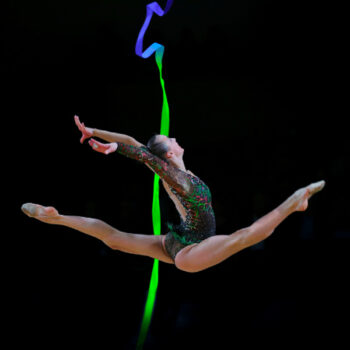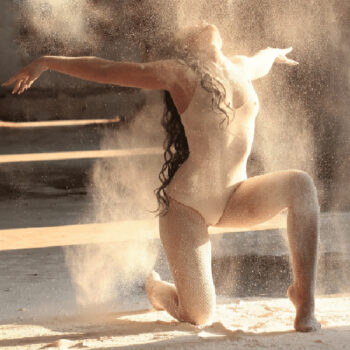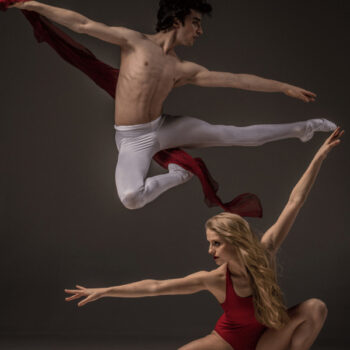What is Ballet Dance?
Ballet dance is a captivating art form that combines precise movements, expressive storytelling, and graceful elegance. Dancers trained in ballet exhibit exceptional athleticism and artistry, captivating audiences with their performances. In this article, we will explore the meaning and style of ballet dance, delve into its rich history, discuss popular ballet dance styles, and provide insights into dancing romantic ballet style.
What is the Meaning of Ballet Dance?
Ballet dance holds a profound meaning as it allows dancers to communicate emotions, stories, and ideas through the medium of movement. With its origins rooted in the Italian Renaissance courts, ballet has evolved into a refined and expressive art form. Through carefully choreographed sequences and intricate footwork, ballet dancers convey beauty, passion, and depth, creating a captivating experience for both performers and viewers.
Ballet Dances Examples
Ballet encompasses a wide range of enchanting dances. From the classic beauty of “Swan Lake” and the enchanting fairy tale of “The Nutcracker” to the romantic tragedy of “Giselle” and the captivating energy of “Don Quixote”, each ballet dance offers a unique experience. These ballet dances showcase the technical prowess, artistry, and storytelling capabilities of the dancers, leaving audiences in awe.
What is the Style of Ballet?
Ballet dance boasts a distinctive style characterized by its emphasis on grace, precision, and fluidity. Dancers move with ethereal elegance, seamlessly transitioning from one step to another. The ballet dance style demands perfect body alignment, exquisite posture, and exceptional control. The dancers strive for a harmonious fusion of athleticism and artistic expression, capturing the hearts and imaginations of those who witness their performances.
5 Popular Types of Ballet Dance Styles
Within the broader category of ballet, there are several popular ballet dance styles. These ballet styles encompass various techniques and artistic approaches, offering unique experiences for both dancers and audiences. Consider five different types of ballet dances.
Classical Ballet
This style emphasizes the basic ballet technique and graceful ballet dance moves that have been refined over centuries. The classical ballet features intricate footwork, elegant turns, and expressive storytelling.
Neoclassical Ballet
Bridging the gap between tradition and innovation, neoclassical ballet blends classical ballet techniques with modern elements. It often showcases daring choreography, asymmetrical movements, and unconventional music choices.
Contemporary Ballet
Pushing the boundaries of traditional ballet, contemporary ballet incorporates a range of influences from modern dance and other art forms. It encourages artistic exploration, experimentation, and the use of innovative movement vocabulary.
Romantic Ballet
Originating in the 19th century, romantic ballet is known for its focus on ethereal beauty, lyrical movements, and emotional storytelling. It often features supernatural themes, tragic love stories, and dreamlike atmospheres.
Character Ballet
Character ballet integrates Russian classical dance elements and stylized character portrayals. It emphasizes storytelling through distinct characters, lively group dances, and cultural influences.
History of ballet dance
The history of classical ballet dance can be traced back to the Italian Renaissance courts of the 15th century, where lavish spectacles and performances entertained nobility. Over time, ballet evolved and gained prominence in France, particularly during the reign of Louis XIV. The establishment of the Academie Royale de Danse in the 17th century solidified ballet's status as a disciplined art form, setting the stage for its global recognition and influence.
Ballet dance origin
Classical ballet dance originated during the Italian Renaissance in the 15th century, primarily as a form of entertainment for the noble courts. It was originally performed by aristocratic dancers at lavish events and festivals with a lavish ballet dancers stand. The elaborate spectacles featured choreographed dances, music, costumes, and sets, showcasing the opulence and grandeur of the courts.
The development of Paris opera ballet as a structured art form can be attributed to the French influence in the 17th century. King Louis XIV, an avid ballet dancer himself, played a significant role in promoting and refining ballet in the Romantic era. He established the Academie Royale de Danse (Royal Academy of Dance) in 1661, which laid the groundwork for the codification of technique and training dance method.
Under the direction of Louis XIV's court composer Jean-Baptiste Lully and ballet master Pierre Beauchamp, French ballet began to evolve into a more disciplined and formalized art form. They introduced specific ballet positions, movements, and vocabulary, which became the foundation of the classical ballet technique that is still practiced today.
During the 18th and 19th centuries, ballet experienced significant advancements and flourished throughout Europe. It expanded its repertoire with the creation of romantic ballets like “La Sylphide”, “Giselle”, and “The Sleeping Beauty”. These classical ballets showcased the technical prowess of dancers and the storytelling capabilities of French ballet as an art form.
How to dance ballet style?
Dancing ballet requires dedicated training and discipline to achieve proficiency in the classical French style. Here are some essential steps to get started:
- Find a Reputable Ballet School: Look for a reputable ballet school or academy that offers professional training. Experienced instructors will guide you through the fundamental techniques and help you develop proper form and posture.
- Begin with French Ballet Basics: Ballet classes typically start with barre exercises. These exercises improve balance, strengthen muscles, and develop coordination.
- Focus on Body Alignment: Maintaining proper body alignment is crucial in ballet. Pay attention to your posture, keeping your spine elongated, shoulders relaxed, and core engaged.
- Develop Strength and Flexibility: Ballet requires exceptional strength and flexibility. Regular conditioning exercises and stretching routines help develop the necessary muscular strength and flexibility for executing ballet movements with grace and precision.
- Refine Ballet Technique: As you progress, your ballet classes will include center work and combinations across the floor.
- Embrace Discipline and Practice: Consistent practice is key to mastering the ballet dance style.
- Seek Performance Opportunities: Ballet is not just about technique; it is also about conveying emotions and telling stories through dance.
Popular ballet techniques
Modern ballet dance is renowned for its exquisite grace, elegance, and technical precision. Behind the seamless performances of ballet dancers lie a set of fundamental techniques that are essential for achieving mastery in this captivating art form. Let's explore some of the popular ballet dance styles list techniques that contribute to the beauty and artistry of Russian ballet dance:
- Turnout: A hallmark of ballet, turnout refers to the rotation of the legs from the hips, causing the feet to face outward. Developing a strong and natural turnout is vital for executing ballet movements with fluidity and grace. Female dancers work diligently to improve their hip flexibility and strengthen the muscles supporting the turnout.
- Pointe Work: Pointe work is a pinnacle ballet technique that involves dancing on the tips of the toes using specialized pointe shoes. This demanding skill requires years of training, as it necessitates exceptional strength in the feet, ankles, and legs. Dancers must learn to maintain proper alignment, balance, and control while executing intricate footwork on pointe.
- Allegro: Allegro encompasses the lively and vibrant movements in ballet, featuring jumps, leaps, and quick footwork. Dancers display athleticism, speed, and agility as they perform various allegro steps, such as the grand jete, tour en l'air, and entrechat. These dynamic movements require explosive power, impeccable timing, and precise coordination.
- Balancing and Pirouettes: Balancing is a critical skill in ballet that requires the dancer to hold a position on one leg while maintaining poise and control. Pirouettes, or turns, are another essential component of ballet technique, involving rotations executed on one leg. Both balancing and pirouettes demand a strong core, refined technique, and a keen sense of balance and control.
Conclusion
Ballet dance is a unique and captivating art form that offers a transformative experience. Its rich history, technical precision, and artistic expression make it a remarkable journey for both performers and audiences. Attending a Russian ballet performance allows one to witness the grace, beauty, and storytelling conveyed through dance, leaving a lasting impression and a deeper appreciation for this enchanting art form.
For those intrigued by ballet, exploring it further through classes or self-study can lead to physical strength, flexibility, and heightened body awareness. Additionally, ballet fosters discipline, perseverance, and a supportive community. Whether as a spectator in American ballet theatre or a participant, delving into the world of ballet opens doors to a lifelong appreciation for the beauty of movement and the power of dance. So, leap into the enchanting world of ballet and discover the magic it holds.




